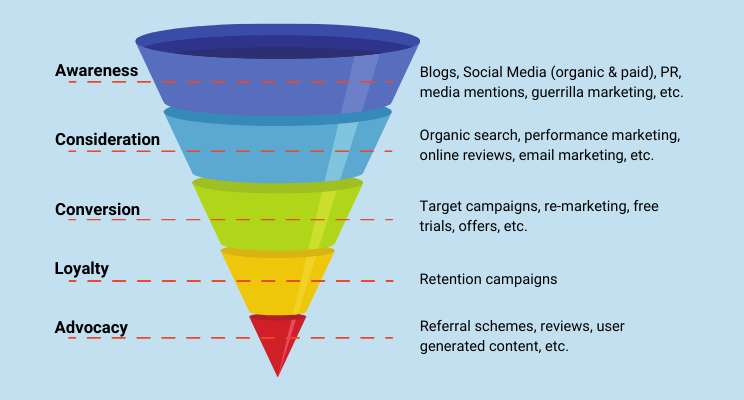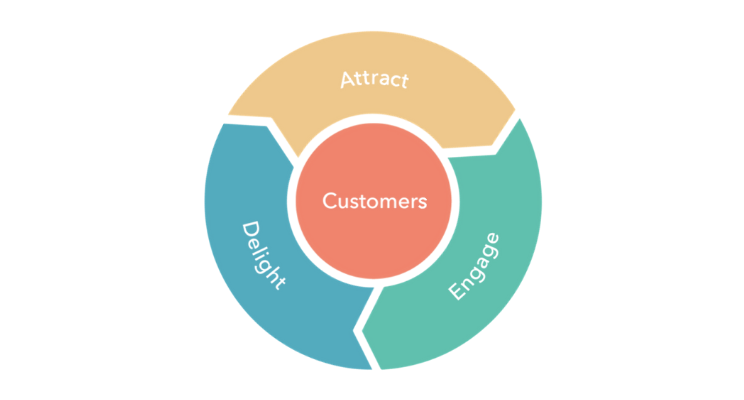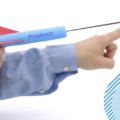So, you have probably heard us and other marketers talk a lot about ‘brand awareness’ and the purchase journey before. What does brand awareness really mean though and is this not just word of mouth? In reality, this is a fundamental part of your marketing strategy and something that needs to be carefully considered and reviewed regularly. The purchase journey has many steps, but in this article we will discuss the first and most crucial step – brand awareness. Whilst, word of mouth is still a reliable and significant part of this, in our digital world there is now so much more to consider!
The marketing funnel
First things first – have you ever heard of the marketing funnel before? If not, you’re about to enter one of the great marketing debates!
Let’s go back to 1898 for a second. Imagine a distinguished-looking guy in his 20’s. Glasses, moustache and an incredibly serious look on his face. His name is Elias St. Elmo Lewis and he’s the founder of an advertising agency in Philadelphia called ‘The Advertisers’ Agency’. Elias comes up with a brilliant concept that soon becomes a slogan:
“Attract attention, maintain Interest, create Desire and get Action”.
Ah! And here it is – the AIDA model. This is the unquestionably clever concept behind the marketing funnel.
So, what is this marketing funnel? It’s a model (based on Elias’ idea) that maps out the purchase journey from the moment a customer learns about a brand (brand awareness, precisely) to the moment they actually purchase their product or service, and beyond.
The funnel outlines 5 different stages of the path to purchase:
- Awareness: are people aware of your brand? Is it recognisable?
- Consideration: are you providing people with enough info to assess your product/service against your competitors?
- Conversion: how can you trigger the actual purchase?
- Loyalty: how can you ensure your customers come back to you?
- Advocacy: how can you ensure your customers refer you to someone else?

The big dispute: is the marketing funnel still ‘a thing’?
Marketers across the world have very different opinions on the effectiveness of this tool.
- Some people glorify it. They see the funnel as the backbone of any good marketing strategy. They may have different interpretations in regards to the best use (e.g. should all 5 stages be considered? Are loyalty and advocacy really needed? Should the steps be adapted based on each customer?). These people will always encourage you to use the funnel.
- Some see the funnel as an old 20th Century inheritance. A flawed model that can’t compare with more up-to-date tools such as the marketing flywheel.

So, “What’s the marketing flywheel?” you may ask – here’s a great guide by Hubspot if you’re intrigued. Their theory is that customers enter the buying process from multiple devices and with different levels of purchase intent. To be honest, they do have a point. Let’s not get distracted though – we’ll talk about this another time!
Now, your marketing funnel philosophy doesn’t really matter at this stage. The truth is that your customers need to become aware of your brand in one way or another. If your customer doesn’t know you exist, they’ll never buy from you – we can all agree on that, right?
What is brand awareness?
“Brand Awareness is the extent to which consumers are aware of a particular product or service”
(Collins Dictionary, November 2020).
So, if we were to translate this into plain English…Brand awareness represents how familiar people are with your brand, product or service and how well they recognise it amongst others.
Let’s think about the following…
- We all recognise the tone of voice used by ‘Innocent Smoothies’ as playful and silly, right?
- You trust that the black horse running on the sand means trustworthy banking from Lloyds Bank, do you?
- We also know that Marmite will always be obsessed with persuading those who hate it to love it!
Yes, these brands are memorable! Their logo, products/services and brand colours are immediately recognisable. These key brand stories and brand metaphors are essential to building up brand familiarity, credibility and reputation. What do you want your legacy to be? How do you want your brand to be remembered?
So, why is brand awareness a crucial step in acquiring new customers?
If people are aware of your brand? Do they remember you? If so, it’s likely that you’ll be top-of-mind when a need (you can satisfy) is perceived. If your brand has a good reputation, people are more likely to buy from you rather than a competitor. Not only this, a good brand awareness campaign can really help you expand your audience. For example, you can reach out to new potential clients and increase traffic to your website.
The more people are aware of your brand, the more chances you have to sell your product/service. Bear in mind that your messaging needs to be in good shape too!
For instance, you could scale up your content distribution across channels. Have you thought about enhancing your brand awareness by engaging with targeted advertising? What about improving your SEO strategy (as well as enhancing your social media content)? Have you considered a small partnership with other brands that are relevant to your market audience? Think about teaming up with your suppliers or with other businesses you don’t compete with. For example, take a business that’s all about sustainable events. They could partner with a micro-influencer that focuses on green economy and sustainability! Certainly, this could help appeal to their clients and followers, and you could support each other in your content marketing efforts.
Summary
In conclusion, we know that Innocent Smoothies, Lloyds Bank and Marmite all had big, bold and expensive ideas. However, there are affordable and simple ways for you too to generate awareness around your brand. Need some inspiration? Check out our 8 tactics to ensure your small businesses is visible!
If you want to know how a brand awareness campaign can drive new customers to your business, get in touch. We’d love to share our thoughts with you in a free consultation – book now!
Don’t forget to check out ‘Brand awareness (part 2): 6 tactics to ensure your small business is visible’ for more details and insights!





0 Comments